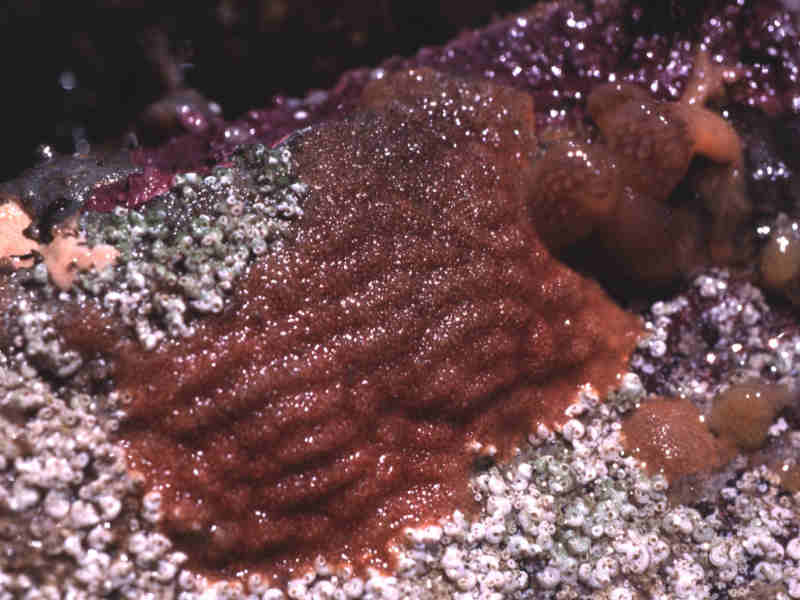Orange peel bryozoan (Turbicellepora magnicostata)
Distribution data supplied by the Ocean Biodiversity Information System (OBIS). To interrogate UK data visit the NBN Atlas.Map Help
| Researched by | Joelene Hughes | Refereed by | Admin |
| Authority | (Barroso, 1919) | ||
| Other common names | - | Synonyms | - |
Summary
Description
Recorded distribution in Britain and Ireland
Occurs on the Isles of Scilly.Global distribution
Found from the Mediterranean north to the Isles of Scilly.Habitat
In the Mediterranean it is usually found to depths of 50 m but has been recorded at 87m. In the Isles of Scilly the bryozoan is a conspicuous member of the rocky shore community and is often found on sublittoral algae.Depth range
-Identifying features
- Zoariums form domes or thick cylinders around hydroids or other algae.
- Zoariums are orange in colour.
- The zoarium characteristically exhibits large avicularia that are generally triangular or elliptical.
- The avicularia are oval with a broad, blunt, distally-narrowed mandible.
- Zooids have a smooth frontal shield.
- The raised marginal ribs creating the shield, are separated by large pores (areoli).
- Each polypide has 16-17 tentacles.
- A low thin collar (peristome) around the orifice encompasses a low avicularium to the left or right of the sinus.
Additional information
The colony form is similar to that of Turbicellepora avicularis. The two species may be differentiated due to the larger, sparser pores on the ovicell of Turbicellepora magnicostata. Turbicellepora magnicostata also has a wider sinus and more distinct marginal ribs.Listed by
- none -
Bibliography
Hayward, P., Nelson-Smith, T. & Shields, C. 1996. Collins pocket guide. Sea shore of Britain and northern Europe. London: HarperCollins.
Hayward, P.J. & Ryland, J.S. (ed.) 1995b. Handbook of the marine fauna of North-West Europe. Oxford: Oxford University Press.
Hayward, P.J. & Ryland, J.S. 1999. Cheilostomatous Bryozoa. Part II Hippothooidea - Celleporoidea. London: Academic Press. [Synopses of the British Fauna, no. 14. (2nd edition)]
Ryland, J.S., 1970. Bryozoans. London: Hutchinson University Library.
Datasets
Fenwick, 2018. Aphotomarine. Occurrence dataset http://www.aphotomarine.com/index.html Accessed via NBNAtlas.org on 2018-10-01
National Trust, 2017. National Trust Species Records. Occurrence dataset: https://doi.org/10.15468/opc6g1 accessed via GBIF.org on 2018-10-01.
NBN (National Biodiversity Network) Atlas. Available from: https://www.nbnatlas.org.
OBIS (Ocean Biodiversity Information System), 2024. Global map of species distribution using gridded data. Available from: Ocean Biogeographic Information System. www.iobis.org. Accessed: 2024-04-20
Citation
This review can be cited as:
Last Updated: 04/04/2002



